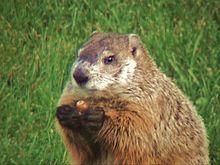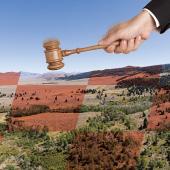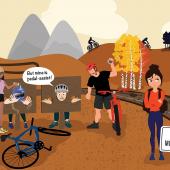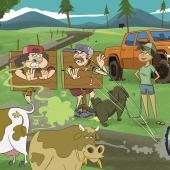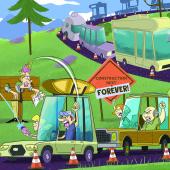Letters: Gophers Are for Girls
Howdy there, folks. Love your mag — usually great fun and good info. We have a nephew at MSU, so your mag sorta helps keep me and my brother Will in touch with him. However, your summer issue, in our view, was less than the norm. We think you folks heard about our land-casting for groundhogs, which we have been doing for decades. (My grandpa taught me and Will how.) You made it sound like, well, something new: catching critters on flea rods. By the way, them "gophers" look like prairie dogs to us. [See "It's in the Hole," O/B Summer 2016, p. 26.]
We farm in southwest New Hampshire. In the fall, we go to the beach and surf-fish for stripers and bluefish, so we have the gear to catch groundhogs. In case you didn't know, them critters (sometimes called "woodchucks" by city folk) are a farmer's worst enemy. They can eat out half a football field worth of crops in a couple days if you're not inspecting that part of your farm. Groundhogs are smart, wiley, and strong, with a great sense of smell (and they don't like coboys — har, har). They live in burrows (dens) around old rock walls with four or five entrnaces and a couple of air vents. In the fall, we try to to clear out as many as possible. You can't get close to the burrow, because your boots leave a smell and the hogs won't show for weeks.
We use spotting scopes to determine which burrow opening is active, and set up a brushpile 40-50 feet away from the target opening. We use a single barbless hook with a 12-inch wire leader, boiled to get smells off and run through an apple. Wearing brand-new painter's gloves, we pick a fresh carrot and beat from the garden and thread them on the hook. Using a surf pole, we carefully cast the baited hook 4-5 feet upwind of the burrow opening. If done right, the smell gets them out quickly. We wear camouflage and stay low. When the hog takes the baited hook, it runs for the burrow. We set the hook and have to horse the hog away from the burrow. We come out from behind the brush and try to get this six- or seven-pound critter, which is going wild, under control.
Will is the bat man. He uses a maple ball bat that we've had since we were kids. He has a good swing and once he gets in range, one or two shots to the head does the trick and puts the critter out of its misery. Will does wear snake leggins and uses a board barrier. The hog's claws are a real problem as any scratches get infected — big trouble. We field-dress the hog and take the innards with us (don't want to draw coyotes). We hang the hog in the barn like we do with deer.
Now, when we have three or four hanging, the neighbor ladies get together, skin them, chop up the lean meat, and mix it with chicken-neck skins to make sausage. When smoked over hickory, it's just terrific. One of the ladies takes the pelts and makes "mink" leg-warmers (mostly, calf-warmers) and sells them to the touris skiers — har, har. After the sausage cures a bit, Will (he's our family joke guy), sends out an invitation to the neighbors for a BBQ serving hog-dogs and burgers — har, har, a real knee-slapper.
You say why a barbless hook? Well, once in a while an eight-to-ten-pounder will break off and run to the hole. It can get a barbless hook out and end up with a toothache, but that is all. A barbed hook or a treble hook would kill the critter a mean death and create one of the foulest smells imaginable. That is why no locals shoot the hogs in their burrows. That pew will bring tears to your eyes a half-mile away if you are downwind.
In parting, Will says maybe you cowboys ought to upgrade and go for chipmunks or squirrels — you know, big game (har, har). Will also noticed there was no advertisment from Suelto's this issue. Maybe you cowboys, with your rough-and-tumble work catching prairie dogs on flea rods, scared off all them beautiful ladies. You should be giving Suelto's a free space — they were missed.
However, Will did want you to know that he has signed up for carp-fishing lessons — har, har.
Your land-casting pros,
Jeb & Will



